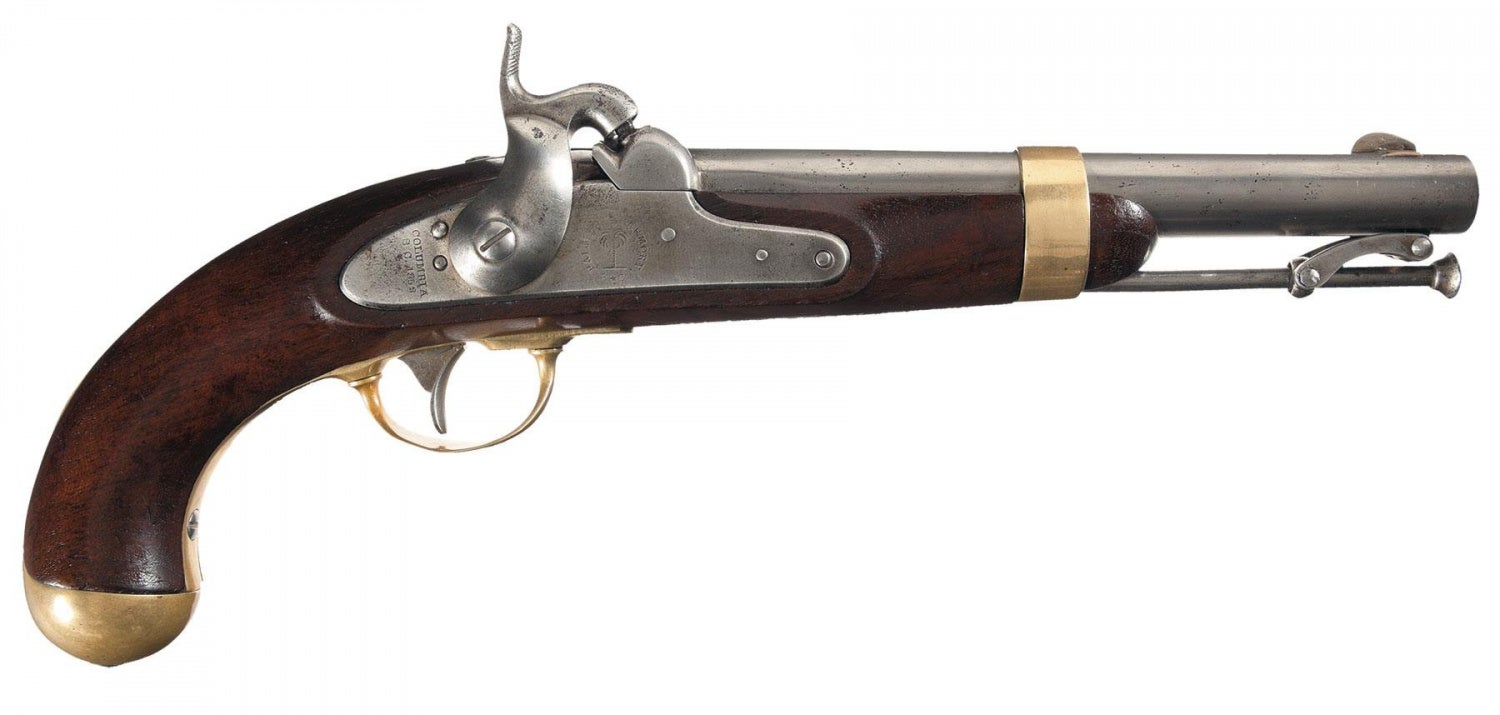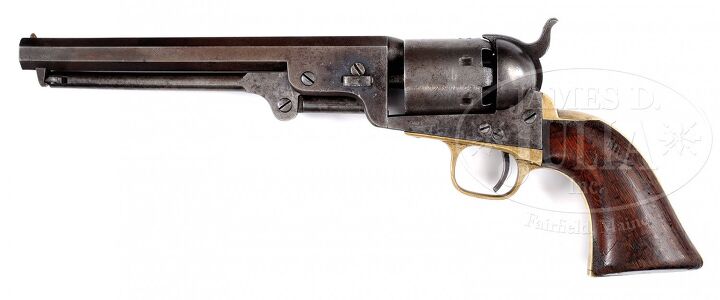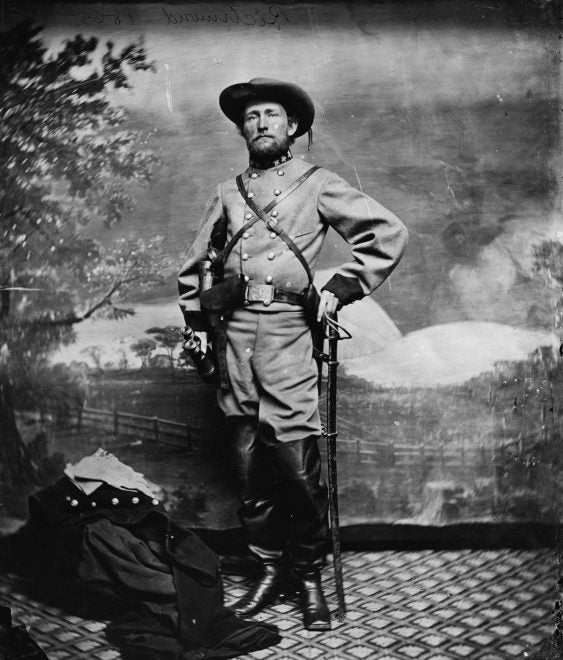Along with the Mexican American War and the Crimean War, the United States Civil War was a 19th-century proving ground of myriad new tactics and technologies of warfare, including the revolver. One of the primary debates within Confederate circles was whether to field a standing army or engage in sustained guerrilla and partisan warfare against the north. While the former took primacy, the latter was pursued in a smaller scale.
Revolver Articles @ TFB:
- Diamondback Firearms Introduces the DB Sidekick Revolver
- Wheelgun Wednesday: One-Handed Revolver Reload – Revisited
- Taylor’s & Company Introduces the Gunfighter Nickel Revolver
- Wheelgun Wednesday: Book Review – “Revolver: Sam Colt And The Six Shooter That Changed America”
One of the main implementations of partisan warfare was the use of cavalry raiders, who would operate deep behind enemy picket lines. These units often succeeded in defeating units much larger than themselves, as well as capturing materiel, officers and even a few generals from their rear headquarters. In turn, they drew off large numbers of men who would otherwise be on the front lines, and slowed the advance of forces who became extremely cautious of their vulnerable supply lines. John Singleton Mosby, “The Gray Ghost”, was one of the most prolific of these raiders, and his experience was that the revolver, when used appropriately, would best the sabre in cavalry combat.
Sixgun Versus Sabre
Mosby became familiar with the benefits of a revolver as an “equalizer” early in his life. Small in stature, he was targeted for a beating by a notorious bully while aged 19 at the University of Virginia. Being forewarned of the beating, Mosby defended himself with a pepperbox revolver, wounding his assailant.

The 1842 Palmetto Percussion Pistol, no match for a revolver
During the war, Mosby soon came to the conclusion that having six, twelve, or even twenty-four rounds ready to fire on hand would enable his unit to punch well above its weight. His unit often evaded mounted cavalry screens, pickets, and patrols. The Union forces were very much of the staid cavalry tradition of the sabre charge, with some even using lances early on in the war. While Confederate cavalry units might be armed with a single shot pistol like the Palmetto, Mosby required men who wished to join his unit to have at least one revolver, usually a Colt or Remington in .36 or .44 caliber.

One of Mosby’s .36 caliber 1851 Colt Navy revolvers. Image Credit: James D Julia auctions
Mosby did not like that sabres rattled inside their scabbards when he was trying to stealthy infiltrate enemy lines. He also had a few negative experiences with sabre to sabre combat and came to the conclusion that revolvers were best when faced with a sabre charge, provided they were employed at short range. He appreciated that in order to use the sabre, Federal forces must come within optimum pistol range first. He became very adept at instructing his men not to waste revolver ammunition at extended ranges, and used his tactics to good effect. His preference for revolvers was so great that he was said to at one time to have admonished a Federal unit they captured that their single shot carbines were not worth capturing.
Pistol Policy in Practice
This policy came to good effect in engagements like the skirmish at Miskel’s Farm. Mosby’s men were caught in a barnyard by 150 troopers of the 2nd Pennsylvania Cavalry, led by Captain Flint. Initially, Mosby’s rangers were at a severe tactical disadvantage. Flint had the element of surprise, and his men were armed with carbines that outranged Mosby’s revolvers. However, Flint decided on a cavalry charge with sabres.
With little warning, Mosby’s men mounted up as best they could and waited until the Federal Cavalry closed within 40 yards. The rangers then opened fire, some of them with two pistols, and exacted a heavy toll on the Federals. They targeted Flint first, as Mosby had a tactic of shooting the officers first to destroy any element of command and demoralize the enemy. Flint was hit six times, and the Federals panicked at the initial wave of casualties. When it was all over, the Federals had lost over 100 men killed and captured to Mosby’s 4.
Mosby also had great success with the revolver versus sabre when being pursued by a large unit of New York Cavalry. The Ranger’s horses were tired, and Mosby had his unit pretend to retreat, taking cover further down the road behind a large abatis (barrier). When the Federal cavalry came close with sabres drawn, he counter-charged from behind the abatis, successfully defeating the larger unit with a mass of revolver fire at close range.
Revolving Forward
Like Jack Hays and the Texas Rangers before him, Mosby was firm in his conclusion that the revolver was best for mounted small unit combat and though wounded by a revolver himself, survived the Civil War despite being outnumbered in most of his engagements. Post-civil war US cavalry units would end up carrying revolvers, sabres, and carbines for all combat eventualities. However, the enduring image of horsemen in post-civil war America, especially in the west, endured as the cowboy, not armed with a sword, but with a sixgun.
References/Further Reading:
Jones, V., 1956. Gray ghosts and Rebel Raiders.
Ramage, J., 1999 Gray Ghost
 Your Privacy Choices
Your Privacy Choices
